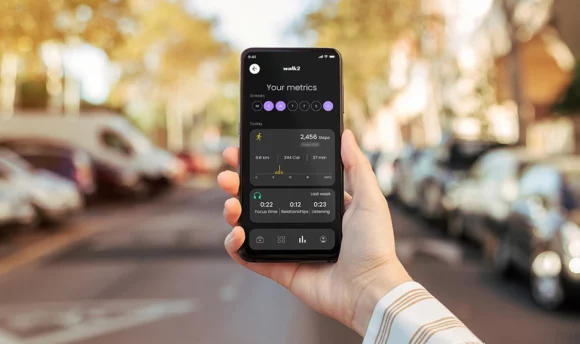Jogging vs. Running: What’s the Difference?

Would you be able to tell the difference between jogging and running if you were asked? Many people aren’t aware that there’s even a difference between them!
So how do they differ exactly, and most importantly, how can you start if you’ve never done either of them before? Let’s take a look.
What’s the Difference Between Jogging and Running?
The main differences between jogging and running are pace, form, and intensity. Jogging is relatively easier than running. However, both exercises are good for improving cardiovascular health and are considered high-impact workouts.
#1 Pace
The main difference between jogging and running is that the latter has a faster pace. Many people consider jogging to be the same as running but slower. While this isn’t entirely inaccurate, it’s essential to consider pace when defining both of them.
When jogging, your pace is generally much slower and more sustained than running. Many people enjoy jogging at a relaxed pace, whereas runners have more physical exertion. Jogging can go on for hours, whereas running tends to be over a shorter terrain.
#2 Form
There is an obvious difference between the form of joggers and runners.
When jogging, your knees don’t come up as far as when you’re running. Your arms will stay steady by your sides for jogging, whereas they will swing up and back while running.
Proper form for running consists of having your head straight up and your gaze in front of you to help reduce the possible strain on your neck muscles. Your shoulders should stay down and your chest out. This form is also suitable for jogging, but it is not as strict since the intensity is not as high.
Running has quicker arm movements and longer strides to help you offset the intense form and physical exertion.
It is true that jogging engages the same muscles as running; however, running has a higher impact on them.
#3 Intensity
Compared to running, jogging is very low intensity.
Your body takes less impact on the ankles, feet, back, hips, and knees while jogging. One can also maintain jogging for more extended periods.
Meanwhile, running is a very high-intensity exercise. Running takes more energy and uses more heart and lung capacity than jogging. While jogging takes more stamina, running takes more overall power.
Also, it’s important to mention that running trains your aerobic and anaerobic energy systems, while jogging doesn’t do that.
How Fast Is a Jog?
Experts look at the pace between jogging and running for how long it takes to cover a 6-mile stretch of flat terrain over an hour.
Jogging pace is slower than 6 miles per hour but faster than 4 miles per hour.
What Speed Is Considered Running?
On the flip side, running is anything over 6 miles per hour on flat terrain. It can be much faster, and it often tends to be.
However, anything faster than 15 miles per hour is considered sprinting!
The Pros of Jogging
Even if jogging is of lower intensity, it still provides many health benefits. Let’s take a look at the ways that taking up jogging can significantly improve your well-being.
#1 Increased muscle strength
Jogging can build up strength in your muscles. Not just in your legs, but all over your body! It is a full-body workout. When you take the time to jog, you’ll notice that you move more easily in your day-to-day life.
Increased strength in your muscles also means increased strength in your joints, which can be helpful if you often find yourself with joint pain in your knees or hips.
#2 Weight loss
Jogging is a low-to-moderate-intensity workout that gets your blood pumping and encourages your body to burn calories, leading to weight loss.
Not only that, but jogging is also great for your cardiovascular health.
#3 Stronger bones
Along with stronger muscles and joints, jogging can also help you strengthen your bones. The bones in your body are surrounded by the muscles and joints, which are important for making sure you don’t break them.
#4 Increased stamina
Jogging helps improve your body’s aerobic energy system. This energy system encourages your body to produce energy through oxygen. The more you improve this system through aerobic exercise, the more stamina your body has in the long run.
The Pros of Running
Jogging isn’t the only exercise that has health benefits. While more intense than jogging, there are a plethora of benefits when it comes to running.
#1 Great cardio
Cardio is one of the best ways to lower your risk of heart disease and improve the overall health of your heart. Due to the high intensity of running as an exercise, your heart becomes more efficient at pumping blood and improving high cholesterol and high blood sugar.
#2 Improves blood pressure
Due to your body learning how to produce energy through oxygen and more incredible stamina through improved heart health, running significantly reduces your blood pressure, which offers decreased risk of stroke or heart attack.
#3 Boosts the immune system
Running is generally considered a great way to help you stay healthier for longer due to the boost in your immune system. After taking up running, you may find that you don’t get sick as often, especially during the flu season.
#4 Helps relieve stress
Our health is more than just about our body – it’s also about our mind. The stress of the mind can significantly affect our physical body, too. Running is proven to reduce brain fog and clear your mind, lowering your risk of stress-related diseases.
How to Start Jogging or Running?
Now that you know all the benefits of running and jogging, you may wonder: how do I get started? It may seem easy enough, but if you’re not adequately prepared going into either of these exercises, you could cause more harm than good.
First, decide which you think would work best for your lifestyle. Running is a more intense exercise, whereas jogging is more casual and relaxed. Some people start jogging and move on to running later after they’re more comfortable.
If you would like to start jogging or running, having assistance and guidance can help make the process easier. We recommend running apps that are specially designed for runners. It focuses on education, motivation, and personalized training.
A Word From Our Coach
Whether you want to lose weight, gain muscle strength, or just looking for a way to ensure better health benefits, running and jogging are both great choices.
Exercises that encourage excellent cardiovascular health are the perfect way to reduce the risk of chronic diseases like heart disease, type 2 diabetes, and even some cancers.
Many Olympic athletes use running and jogging as an exercise to help them with their specific sports, even if those sports don’t have much to do with running or jogging.
While the apparent difference between running and jogging is usually physical, there are mental differences as well. Experienced runners tend to have different mindsets than proficient joggers.
Running requires more mental energy when compared to jogging due to the fact that running requires more energy and greater power output. Meanwhile, jogging tends to be much more relaxed and easygoing.
Conclusion
There are considerable differences between running and jogging. Running is often faster-paced, whereas jogging is much slower. The running form is also much different, as your body must compensate for a higher intensity activity.
Despite the differences, jogging and running are both excellent for your health in different ways. If you’re looking for great cardio health benefits, reduced stress, stronger muscles, and even weight loss, you should consider one of these two exercises.

















































 Select your language:
Select your language: 








